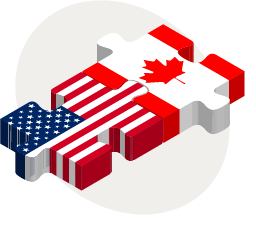 Things are looking upbeat for Canada's economy after a few years of difficulty. That is good news for the nation overall, but the trend may eliminate the trade advantage Canada has enjoyed due to its weak currency.
Things are looking upbeat for Canada's economy after a few years of difficulty. That is good news for the nation overall, but the trend may eliminate the trade advantage Canada has enjoyed due to its weak currency.
With the new budget that was unveiled last week, Canada is fresh off its third consecutive year of trade surpluses. One major reason for the nation's favorable trade balance is the low value of the Canadian dollar relative to other currencies. The U.S. dollar and Canadian dollar were nearly at parity in 2012, but when global commodities markets took a nosedive, major producers like Canada were hit hard. As demand slowed for the energy-heavy exports that Canada provides the rest of the world, the value of the Canadian dollar, or "loonie," also slipped.
The Canadian economy has turned around since then. Commodity prices have rebounded, restoring Canada's ailing trade balance, and Prime Minister Justin Trudeau has promised policies that would help continue this growth. Soaring markets in the United States—one of Canada's primary trading partners—have also helped. The Federal Reserve's March interest rate increase of 25 basis points indicates that the Fed expects further growth in the U.S. economy in the near future. And as the U.S. goes, so goes Canada, generally.
Complete your profile to continue reading and get FREE access to Treasury & Risk, part of your ALM digital membership.
Your access to unlimited Treasury & Risk content isn’t changing.
Once you are an ALM digital member, you’ll receive:
- Critical Treasury & Risk information including in-depth analysis of treasury and finance best practices, case studies with corporate innovators, informative newsletters, educational webcasts and videos, and resources from industry leaders.
- Exclusive discounts on ALM and Treasury & Risk events.
- Access to other award-winning ALM websites including PropertyCasualty360.com and Law.com.
*May exclude premium content
Already have an account? Sign In
© 2024 ALM Global, LLC, All Rights Reserved. Request academic re-use from www.copyright.com. All other uses, submit a request to [email protected]. For more information visit Asset & Logo Licensing.







